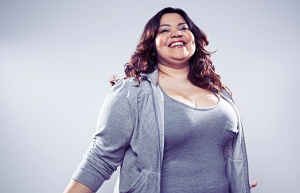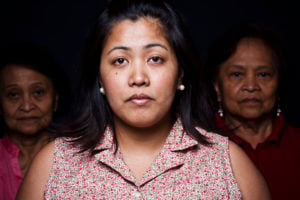Carlos Maza: Abortion is one of the safest common surgical procedures for women in the United States. But I’ve noticed that news outlets still talk about it like it’s something extreme or dangerous.
News Anchor 1: All abortion is horrific. Even in the first trimester. Keep in mind – heart’s beating at three and a half weeks.
News Anchor 2: What the heck is wrong with these people that in the third trimester, you are so selfish and disgusting that you would kill a child?
Carlos Maza: It’s called abortion stigma, and it’s seriously screwing up our news coverage of abortion. So I decided to ask some experts what’s going on here.
Erin Matson, Co-Founder and Co-Director, Reproduction: Abortion stigma is a shared understanding that abortion is either morally wrong or socially unacceptable – which is not true. And that’s as defined by the Sea Change Program, which is the leader in abortion stigma research.
Hanna Groch-Begley, Research Director, NARAL: Abortion stigma is anything that tells a woman that she can’t have power over her own body or her own life decision.
Carlos: Roughly a million abortions are performed in the US every year, and nearly one in three women will have an abortion by the time they’re 45. But news coverage about abortions is still plagued by stigmatizing and negative stereotypes about women who choose to have the procedure.
In right wing media – like Fox News – abortion stigma can be pretty obvious.
News Anchor 3: This evil in which we all in this country have accepted since Roe v. Wade—
News Anchor 1: Abortion doesn’t unrape a woman. An abortion just adds more on top of that first violence that she endured.
News Anchor 4: The war against babies.
News Anchor 5: I mean, we’re talking about a very brutal violent act against a child.
Carlos: But abortion stigma also shows up in mainstream coverage, usually in subtle ways, like when news outlets use B roll of extremely pregnant women during abortion segments.
Hanna: What’s absurd when you see B roll of women who are very, very pregnant – or even B roll of babies during stories about abortion – is that’s simply not at all a reflection of what’s really going on. The vast majority of abortions take place in the first trimester.
Erin: You’d think that the people having abortions are women who are 40 weeks pregnant. Heck, maybe they’re halfway through labor and they decided, “I’d like to have an abortion.” The thing is, that’s the farthest from the truth.
Carlos: Abortion stigma also shows up in coverage of TRAP laws, which are regulations aimed at shutting down abortion clinics by creating absurd so-called medical safety standards. News outlets uncritically describe these laws as safety measures without noting that legal abortions are already incredibly safe.
Erin: The media, again, has a responsibility to make it clear that abortion is overwhelmingly safe, that people who are getting their wisdom teeth removed are in much more danger than people who get abortions.
Hanna: Abortion is incredibly safe. It’s safer than childbirth. So when the news allows the conversation about abortion to be fixated on this question of safety, it’s really misleading. If we want to talk about something that’s scary, something that isn’t safe, we need to be talking about what it will look like when these clinics close.
Text: Planned Parenthood says: Only 3% of services it provides are abortions.
Carlos: What’s really frustrating – abortion stigma can even show up in positive news coverage. When people defend Planned Parenthood by focusing on all the other services they offer – or defend abortion access by focusing on cases of rape or incest – experts worry they miss opportunities to defend abortion as a legitimate option for everyone else.
Text: 97% of services include: breast exams, pelvic exams, cancer screenings, contraception
Erin: It’s sad. It’s tragic, actually, that we’ve come to this point in abortion stigma where we say that the only way it’s defensible to have an abortion is if something absolutely terrible happened to you or it’s happening in your life.
We need to make space – not just for people who’ve been raped or people who have cancer or people facing life-threatening conditions, but also people who say, “You know what? I just don’t want another kid right now.” Or, “You know what? Now is not the right time for me.” Or, “I never wanted kids.” That’s okay, too.
Carlos: Abortion stigma is a real problem. People should be able to watch the news without being shamed for making totally normal healthcare decisions. And experts point out that has a real impact on public opinion and policy debates about women’s access to healthcare.
Erin: One of the things that the media does so frequently is it accepts that abortion is a fact-free zone. It will just use these talking points from the right-wing uncritically, without going back and checking the facts. This is how these lies gain traction, and this is how policy gets made that directly hurts women around the country.
Carlos: Here we are nearly half a century after Roe v. Wade. It’s time the media stop treating abortion like something taboo and start treating it like what it is – a normal and important part of life for people all across the country.




















